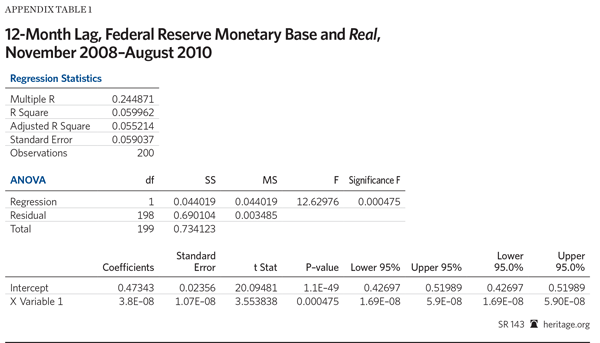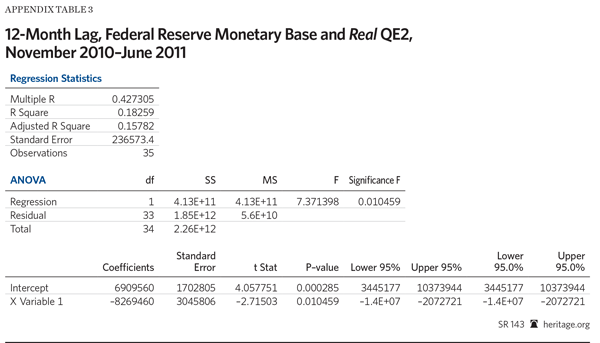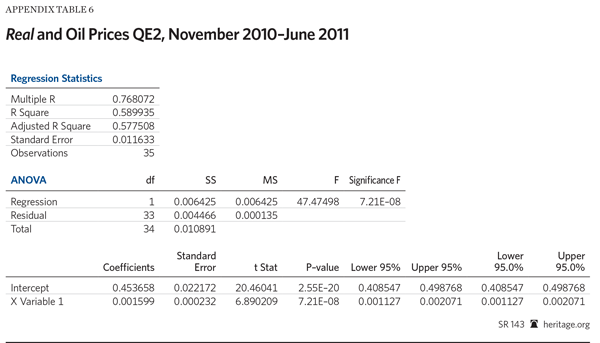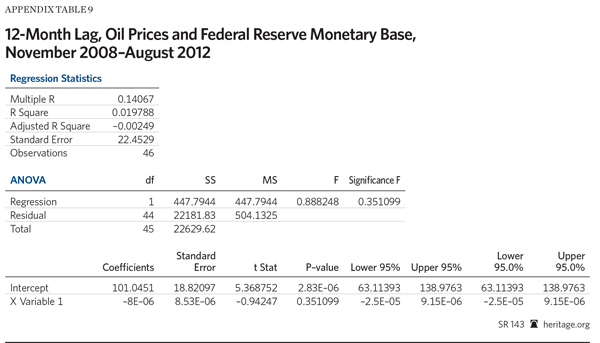In 2010, Brazilian Finance Minister Guido Mantega fired off the first of a series of rhetorical salvos in what he called the “currency wars.” According to Mantega, serial competitive devaluations by the world’s largest economies aimed at boosting First World exports and monetizing their budget deficits were undermining the health of emerging economies—particularly his own. The battlefields of these conflicts were to be the world financial markets, as emerging economies would have to fend off “hot money” flows—flows of speculative capital into portfolio investment accounts—that would overvalue their currencies.[1]
By branding the United States and other developed nations “enemy combatants” in this financial conflict, however, Mantega cleverly ignored the roots of his country’s own economic problems. As the research presented in this Special Report demonstrates, quantitative easing (QE) and the “hot money” it spawned certainly had some role in the appreciation of the value of the real over the past few years. However, it appears that the most important drivers of the appreciation of the currencies of commodity-exporting countries were the commodity markets themselves.
Now that the Fed has signaled the eventual end of QE via the “tapering off” of bond purchases, yields on 10-year Treasury bills are beginning to rise. At the same time, prices for commodities and the value of the Brazilian real are beginning to fall. It is time for Brazil to address the fundamental structural problems that are holding back its economic growth—problems that Minister Mantega apparently preferred not to confront three years ago.
A Short History of Brazil’s “Currency Wars”
In 2008, as the global recession began to unfold, the U.S. Federal Reserve Bank implemented a new open market policy known as quantitative easing (QE). This policy was meant to provide liquidity to the banking system by printing money and distributing it through the purchase of bonds on the open market. In Brazil, the government feared that this excess liquidity would flood into Brazilian markets as “hot money,” contributing to the overvaluation of the real, and diminishing the country’s international competitiveness.
In response to these policies, in 2009 the Brazilian government began to implement a series of short-term controls on capital inflows to limit these effects. The most significant of these controls was a 6 percent financial transactions tax that was maintained for more than two years until it was abolished in June 2013.[2]
Brazil’s imposition of these controls, however, was based on a false premise—that the strengthening of the real was due solely, or mostly, to “hot” capital inflows as a result of First World monetary policies. In fact, while monetary policies of the Fed and the central banks of other developed countries likely played some role, the strengthening of the real was primarily the consequence of two policies of the Brazilian government: (1) the laudable maintenance of high real interest rates over the long term to prevent Brazil from backsliding into the hyper-inflation of the past[3] and (2) a concerted effort to focus economic policy not on additional internal reforms but on export and commodity-driven growth. This made Brazil vulnerable to “Dutch disease,” a phenomenon that occurs when currencies appreciate as commodity exports rise, while non-commodity exports become less competitive.[4] Brazilian leaders and policymakers also used these export windfalls and cheap credit to fund spending and consumption, rather than investments that could stabilize the long-term macroeconomy.[5]
The Brazilian example is an important case study in the decades-long battle over the role and value of capital controls in the international financial system, especially for emerging market economies. In recent years some International Monetary Fund (IMF) economists have urged the reversal of long-standing IMF policy[6] by calling for financial controls in some cases to prevent or mitigate international financial crises.[7] As Heritage Foundation analysts have argued in urging U.S. policymakers to oppose these controls, rather than choking off potential inward investment by imposing capital account constraints, the Brazilian government (and all others) should focus on internal reforms to lower transaction costs, remove distortionary regulations, and promote domestic economic growth, thereby making Brazil more attractive to foreign investors.[8]
The free flow of capital between countries is vital for future global growth; it is the most efficient and productive way to connect the world’s creditors to entrepreneurs who will generate the economic growth needed to drive prosperity and reduce the debts of sovereign nations and individuals. In short, Brazil should stop making excuses (such as blaming “hot money”) for its ongoing failure to achieve optimal economic growth.
Blaming the Fed Did Not (and Will Not) Solve Brazil’s Problems
In December 2012, Federal Reserve Chairman Ben Bernanke announced an expansion of the Fed’s third round of quantitative easing (QE3). This latest round of purchases of mortgage and government debt is a continuation of efforts by the Fed to stimulate U.S. economic growth. Unfortunately, QE1, QE2, and QE3 have had an insufficiently positive impact on U.S. economic growth rates. These policies have tripled the Federal Reserve’s balance sheet to historically unprecedented levels and have distorted asset prices, hampering the U.S. economic recovery and creating enormous future problems as the Fed considers strategies to unwind these positions and dispose of these assets. Past rounds of quantitative easing have failed to stimulate the economy noticeably, and it seems unlikely that the diminishing returns of further rounds will be much more effective.[9]
The Fed’s QE policies were matched by comparable monetary easing policies by the European Central Bank and the Bank of Japan—which together have provoked a chorus of similar complaints from export-driven economies. These unorthodox monetary policies prompted calls for capital controls not just from Brazil, but also from South Korea, Peru, and Thailand.[10]
In Brazil’s case, since 2009 the government implemented several measures to try to curb excess inflows of hot money, including the so-called tax on financial operations. In addition, the government increased duties on dozens of foreign-made goods to help domestic manufacturers.[11] Such controls did succeed in limiting the flow of capital into the country, but also limited freedom of trade and hurt economic growth by distorting markets. They also narrowed connections between global creditors and debtors (which function as vital “feedback” loops) and encouraged corrosive cronyism (firms that benefit the most from controls are often the ones closest to the government).[12]
Brazilian Case: Currency Appreciation and “Dutch Disease”
The Federal Reserve’s QE policies began during, and helped fuel, a remarkable worldwide run-up in commodity prices. Since 2002, spurred by demand from China and elsewhere, oil production in Brazil has risen nearly 45 percent, from 1.8 million barrels per day to 2.6 million barrels per day in 2011.[13] Production was led by Petrobras, the massive, partially state-owned Brazilian oil company. When enormous new reserves of oil were discovered in the Tupi Field off the southeast coast, then-President Luiz Inácio “Lula” da Silva boasted that these reserves would represent Brazil’s “second independence.”[14] In addition, the huge partially state-owned mining multinational Vale has become one of the world’s largest producers of iron ore, and its exports make up 16 percent of all Brazilian exports.
Lula’s decision to emphasize oil exploration and commodity exports instead of prioritizing further domestic reforms (begun by his predecessor, President Fernando Henrique Cardoso) to liberalize and diversify the economy aggravated symptoms of Dutch disease, and contributed to the rapid appreciation of the real in recent years. Revenues from the commodity-export boom caused a “spending effect,” which funneled capital flows to non-tradable sectors, such as services. These capital flows increased the demand and price of labor, subsequently raising prices within the country and appreciating the real exchange rate.[15]
As illustrated in Chart 1 (below) the real appreciated against the dollar roughly in line with the rise in oil prices over the past decade. The price of the real rose from about 45 centavos on the dollar in 2006 to over 60 centavos in 2008, when the commodity bubble deflated with the world economy. As a result of this appreciation, Brazilian non-commodity exports gradually became less competitive, falling from 16.5 percent of GDP in 2004 to 13.5 percent of GDP in 2010.[16]
The Effects of U.S. Federal Reserve Policies on the Brazilian Economy
The analysis of the effects of the Fed’s quantitative easing policies on Brazilian currency and investment regimes begins by examining data on the monetary base of the U.S. Federal Reserve, historical exchange rates for the real, and the relationship between the value of the real/dollar cross-rate and the spot price for West Texas Intermediate crude oil (WTI) from November 2008 to August 2012 (which encompasses the QE1 and QE2 programs). Weekly averages for monetary base, real/dollar exchange rate, and WTI are used throughout. The monetary base[17] is used as a reflection of the Federal Reserve’s open market policies; data on exchange rates track the movement of the real and the dollar over that time frame. WTI is a proxy for Brazilian oil prices and was chosen because the composition of WTI, as a light crude oil, is similar to the composition of Brazilian export crude from the Tupi Oil Field off Brazil’s southeast coast. Since oil is traded on the international market, prices between WTI and Tupi oil should be comparable. In these analyses weekly monetary base volumes, exchange rates, and WTI spot prices were used to maximize the number of observations in the regression. Monetary base data was—at first—lagged at zero, three-month, six-month, and 12-month intervals. Ultimately, the 12-month lag was used in this analysis because it produced the strongest results. This 12-month lag will reflect the delayed impact that monetary policy has on the market. For example, the effects of monetary policy in 2010 are analyzed with foreign exchange and investment data from 2011. Use of the 12-month lag limited the analysis to QE1 and QE2.
The Real and Monetary Base: QE1 and QE2. Regression analysis provides statistically significant indicators of the relationship between the real and the Federal Reserve’s monetary base so as to determine whether Fed policies had any effect on trading of the real and, in turn, on the competitiveness of Brazilian exports.
The first regression obtained analyzed the relationship between the monetary base and the price of the real to the dollar over the entire sample period from November 2008 (at the start of quantitative easing policies) to August 2012. Again, monetary base numbers were lagged 12 months. The results indicated a statistically weak relationship between the Fed monetary base and the value of the real at a low level of confidence, with r=0.24 and r2=0.06.[18]
The data is more telling, however, when decomposed according to the periods of the various QE time periods. QE1 lasted from November 2008 to March 2010. A regression analysis of the monetary base and the real during that time period does show a strong correlation between the monetary base and the real (r=0.82 and r2=0.67).[19] However, the regression analysis of QE2 paints a less certain picture. An analysis of the Fed’s monetary base between November 2010 and June 2011 and the real, using the 12-month lag, shows a weaker relationship. In this regression the “r” and “r2” values both drop to statistically less significant levels (at 0.43 and 0.18, respectively)[20] indicating a reduced relationship between Fed policy and the real during QE2.
The Real and Oil Prices. Although the evidence above certainly indicates that there is some relationship between the Fed’s actions and the value of the real, another hypothesis was also tested: Were oil prices an even more significant causative factor accounting for the appreciation of the real?
A broad regression of WTI prices and the real between November 2008 and August 2012 indicates a significant correlation between the price of oil and the price of the real during the same time period, with r=0.75 and r2=0.56.[21] This could indicate that the price of oil and the run up in commodity prices in Brazil contributed to a run-up in the real. This would have strengthened the price of the real due to Brazil’s reliance on commodity exports.
A more in-depth analysis indicates a consistently strong trend. A regression of WTI and the real during QE1 generated the most statistically significant results in the analysis. With “r” and “r2” values at 0.95 and 0.89 the correlation appears to be extremely strong.[22] Secondary data corroborate this conclusion at a high level of confidence. This may indicate that, at least during QE1, oil prices were a better indicator of the value of the real than was the size of the Fed’s balance sheet.
The results obtained during QE2 tell a similar story. In this case the correlation is slightly stronger (r=0.77, r2=0.59) at high levels of confidence, with the outcomes of the t-tests and p-values strengthening the link.[23] This analysis still supports a conclusion that oil prices had a statistically significant impact on the value of the real during QE2.
This point is particularly important when the weaker relationship between monetary base and the real during QE2 is taken into consideration. The weak relationship between these variables, both across the whole period and separately in QE1 and QE2, when compared to the stronger correlation between both oil prices and the real across all periods, seems to indicate that oil prices are a much better indicator of the strength of the real than quantitative easing policies were. The real’s persistent relationship with oil prices, as opposed to its relatively less significant relationship with quantitative easing policies, seems to call into question the Brazilian government’s blanket denunciation that the U.S. Federal Reserve was responsible for its economic ills.
Monetary Policy as a Mediator of Oil Prices. These results indicate a stronger relationship between the price of the real and oil prices. But, to ensure that these results are robust, it is also important to determine whether monetary policy itself could be mediating oil prices. If that were the case, quantitative easing policies could be artificially inflating the price of oil on the international market, and thus as a secondary effect, distorting the price of the Brazilian exchange rate.
To do this it is important to diagnose whether the price of oil is determined by monetary policy or market conditions. In this analysis a monthly price of WTI was used as a benchmark for oil, worldwide production of oil in barrels per day (BPD) was used as a proxy for supply, and monthly data on the monetary base for the U.S. Federal Reserve (Fed), the Bank of Japan (BOJ), and the European Central Bank (ECB) was used for monetary policy.
First, a regression was obtained on the price of oil and each monetary base series from the Fed, BOJ, and ECB.[24] In each regression, the monetary base from these central banks proved to be a poor indicator of the price of oil, registering relatively insignificant “r” and “r2” coefficients. Likewise, a combined monetary base for all three central banks produced r and r2 scores of 0.02 and 0.00, respectively.[25] This indicates that the monetary base is not a good indicator of oil prices.
Second, it was necessary to determine whether market conditions are a better indicator. In this regression, oil prices are compared to worldwide oil supply. This returned a strong relationship at a high level of confidence (r=0.79, r2=0.62).[26]
The results from these regressions indicate that monetary policy might not mediate oil prices and that, instead, market conditions may play a more significant role in determining oil prices. Therefore, it is likely that quantitative easing during the period examined did not inflate the price of oil. As a result, monetary policy does not appear to be the primary factor in the appreciation of the real.
U.S. Must Support Investment Freedom
Recent U.S. Federal Reserve policy has been risky, and likely will be shown by future economic historians to have been counterproductive to long-term U.S. growth[27]—but Brazil should not use the Fed’s actions as a scapegoat for its own bad policies. In the past decade, Brazil has tried to have its cake and eat it too—pursuing export-driven policies that lead to appreciation of the real while simultaneously complaining about that very appreciation.
While Brazil benefitted immensely from the run-up of commodity prices in recent years it did not take sufficient advantage of the resulting prosperity to continue the Cardoso-era reforms. Instead of focusing mostly on the expansion of state-owned enterprises and the exploitation of natural resources, sustainable economic growth and productivity could have been achieved more effectively by pursuing a series of reforms focused on economic freedom—to include additional privatizations of state-owned enterprises, liberalization of Brazil’s rigid regulatory environment, and harmonization of the country’s many different taxation regimes (such as state vs. federal).
Further guidance for Brazilian policymakers can be found in the 2013 Index of Economic Freedom,[ 28 ]published by The Heritage Foundation and The Wall Street Journal, which provides numerous details on Brazil’s most needed reforms.
Conclusion
Overall, the findings of this Special Report support the conclusion that, while Fed policy certainly played a role in the appreciation of the real, it was rising oil prices and Brazil’s dependence on commodity exports that had the strongest and more lasting impact on the value of the real between 2008 and 2011. This finding indicates that, while the inflow of hot money into Brazil certainly had an effect on the value of the real, the true source of Brazil’s overvalued currency was its reliance on commodity exports. The increased prices for and volume of commodities exported flooded the Brazilian market with hard currency, appreciating the real and displacing manufacturing—a classic Dutch disease scenario.
Ultimately, if Brazil wants to fix its currency woes, it should cease its search for foreign scapegoats and look within. Diversifying its economy away from commodities would help its overvalued currency more than pointing fingers at the U.S. Federal Reserve and implementing ineffective and distortionary protectionist measures. Brazil should:
- Revitalize, expand, and deepen privatization programs begun under President Fernando Cardoso and continued during President “Lula” da Silva’s first term. Public stakes in commodity firms like Vale and Petrobras create perverse incentives that encourage policymakers to promote industries that enhance these companies’ bottom lines, thus returning a windfall to the government. Privatizing national holdings in these firms would reduce these incentives and decouple the conflict of interest between policy and business.
- Defer from introducing additional capital controls to manage the capital account. These controls are a tax on investors and exacerbate distortionary effects. For example, such limitations can trap money in the Brazilian market (because investors want to avoid paying taxes on the capital gains) and exacerbate inflationary pressures.
As internal political pressures build (such as the widespread anti-government street demonstrations in 2013) and the windfalls from high commodity prices diminish, the government of Brazil must make serious efforts at reform in order to jump start an already sputtering economy. Low productivity, high labor costs, economic micromanagement, and industrial policies have all contributed to lethargic economic outcomes.
To regain a sustainable footing for long-term growth, the economy must diversify away from the commodity-centric growth that industrial policies and state ownership have encouraged. While there may be short-term advantages to such emphasis, Brazil is finally starting to see some of the long-term ramifications of such a narrow-minded growth strategy. It is not too late. By privatizing state-owned enterprises, lowering barriers for entrepreneurs, and reducing taxes on trade and investment, President Dilma Rousseff and Minister Mantega can return Brazil’s economy to the path toward growth and economic freedom.
















